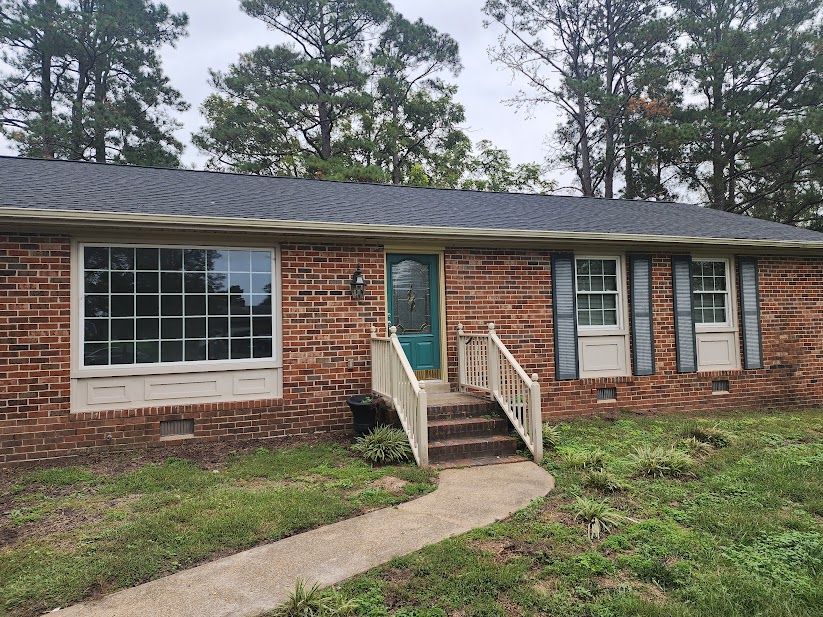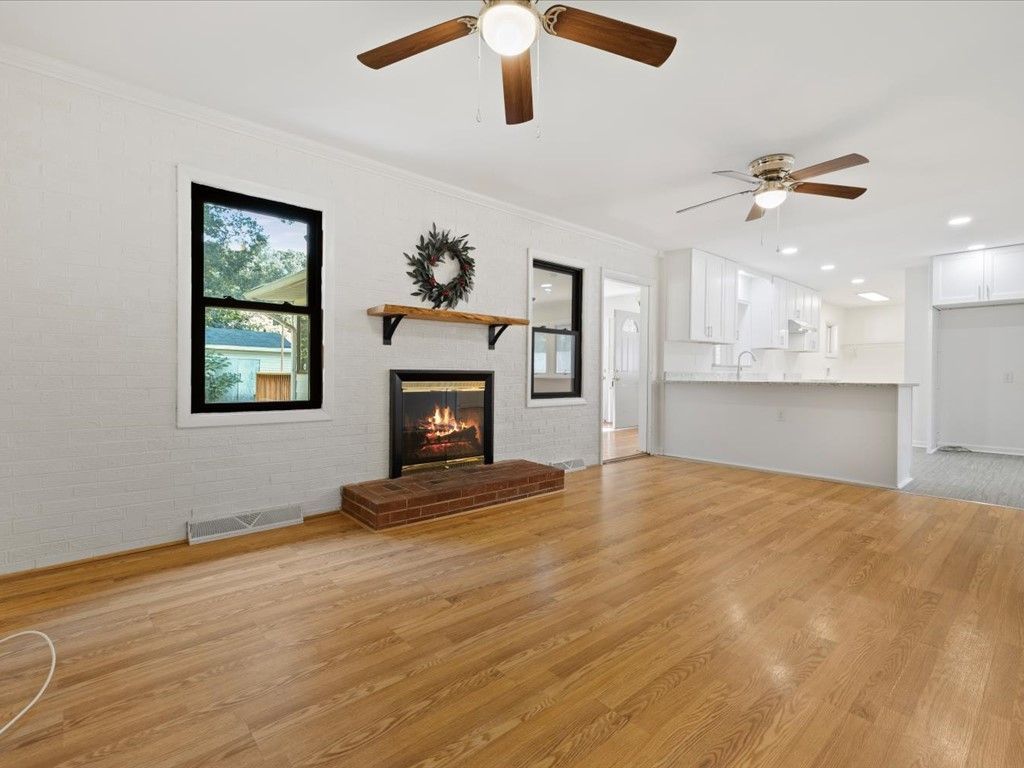The Complete Guide to Selling Your Home in 2025: What Every Seller Needs to Know
Understanding Today's Real Estate Market
Before listing your home, it's crucial to understand the current market conditions. The real estate landscape has evolved significantly, and being informed gives you a competitive advantage.
Market conditions generally fall into three categories: seller's markets (where demand exceeds supply), buyer's markets (where supply exceeds demand), and balanced markets (where supply and demand are roughly equal). Each requires a different strategy. Your local market conditions will influence everything from your pricing strategy to how you negotiate offers.
Interest rates, economic conditions, and seasonal trends all play a role in how quickly homes sell and at what price. This is where working with an experienced real estate agent becomes invaluable—we monitor these factors daily and adjust strategies accordingly to ensure your home stands out.
Preparing Your Home for Sale: First Impressions Matter
The preparation phase can make or break your sale. Buyers form opinions within seconds of seeing your home, whether online or in person. Here's how to make those seconds count.
Decluttering and Depersonalizing
Start by removing personal items like family photos, collections, and unique décor. Buyers need to envision themselves in your space, and that's difficult when they're surrounded by your personal story. Decluttering also makes rooms appear larger and more inviting.
Consider renting a storage unit for excess furniture, seasonal items, and belongings you won't need during the selling process. A good rule of thumb: if you haven't used it in six months and won't need it in the next three, it should probably be stored or donated.
Deep Cleaning and Minor Repairs
Your home should sparkle. This means more than your regular cleaning routine—consider hiring professional cleaners for a deep clean before photos and showings. Pay special attention to kitchens and bathrooms, as these rooms significantly influence buyer decisions.
Walk through your home with a critical eye and make a list of minor repairs. Fix leaky faucets, patch holes in walls, replace burned-out light bulbs, and repair squeaky doors. These small issues might seem insignificant to you, but they signal to buyers that the home may have larger maintenance problems.
Strategic Improvements and Staging
Not all improvements offer equal returns. Focus on updates that buyers notice and value. Fresh paint in neutral colors is one of the best investments you can make—it's relatively inexpensive and makes spaces feel clean and updated.
Enhance curb appeal by maintaining your lawn, trimming bushes, planting flowers, and ensuring your entryway is welcoming. The exterior is the first thing buyers see, and a well-maintained exterior suggests a well-maintained interior.
Professional staging can increase your home's sale price by 5-15% and help it sell faster. If full staging isn't in your budget, focus on staging key rooms like the living room, master bedroom, and kitchen. Sometimes simply rearranging existing furniture to maximize flow and space can make a significant difference.
Pricing Your Home Correctly: The Make-or-Break Decision
Pricing is both an art and a science. Price too high, and your home will sit on the market, eventually requiring price reductions that signal desperation. Price too low, and you leave money on the table.
The Comparative Market Analysis
A comprehensive comparative market analysis (CMA) examines recently sold homes similar to yours in your neighborhood. We look at homes with similar square footage, number of bedrooms and bathrooms, lot size, and condition. We also consider active listings (your competition) and pending sales (what buyers are currently willing to pay).
Your home's unique features—upgrades, location within the neighborhood, views, or lot characteristics—are factored into the final pricing recommendation. However, emotional attachment shouldn't influence pricing. What you paid for the home or how much you've invested in improvements doesn't determine market value; buyer demand does.
Strategic Pricing Approaches
In some markets, pricing slightly below market value can create competition and potentially drive the price up through multiple offers. In others, pricing at fair market value from the start attracts serious buyers without creating urgency-driven anxiety.
We'll analyze your specific situation, timeline, and local market conditions to determine the best pricing strategy for your goals. Remember, the first two weeks on the market generate the most activity—you want to capture that interest with the right price.
Marketing Your Home: Standing Out in a Crowded Market
Once your home is ready and priced correctly, it's time to showcase it to potential buyers. Effective marketing reaches the right buyers through the right channels at the right time.
Professional Photography and Virtual Tours
In today's digital age, your home's online presence is critical. The majority of buyers begin their search online, and professional photos can make the difference between a buyer scheduling a showing or scrolling past your listing.
Professional real estate photographers understand how to capture spaces to make them look spacious, bright, and inviting. They use proper lighting, angles, and equipment that smartphone cameras simply can't match.
Virtual tours and video walkthroughs have become increasingly important, allowing serious buyers to preview homes before visiting in person. This pre-qualification process means the buyers who do schedule showings are genuinely interested.
Multi-Channel Marketing Strategy
Your home will be listed on the Multiple Listing Service (MLS), which feeds to major real estate websites where millions of buyers search daily. But effective marketing goes beyond just listing your home.
Social media marketing, email campaigns to our network of agents and potential buyers, open houses, and targeted digital advertising all play roles in getting maximum exposure for your property. The goal is to create a sense of demand and urgency among qualified buyers.
Highlighting Your Home's Unique Selling Points
Every home has features that make it special. Maybe it's the recently renovated kitchen, the large backyard perfect for entertaining, the home office with built-in shelving, or the location near top-rated schools. We'll identify and emphasize these features in all marketing materials to attract buyers looking for exactly what your home offers.
Showings and Open Houses: Making Buyers Feel at Home
Once your home is on the market, you'll need to be flexible with showings. The more accessible your home is, the more potential buyers will see it, increasing your chances of receiving strong offers.
Preparing for Showings
Before each showing, make sure your home is spotless. Open curtains to let in natural light, turn on all lights, set the temperature to a comfortable level, and eliminate any odors (cooking smells, pet odors, or even strong air fresheners).
If possible, leave the home during showings. Buyers feel more comfortable exploring and discussing the property freely when the owner isn't present. If you have pets, arrange for them to be away during showings as well—not all buyers are comfortable around animals, and some may have allergies.
The Open House Strategy
Open houses can be effective, especially in active markets. They create urgency by bringing multiple potential buyers through at once, and they're convenient for buyers who want to visit several homes in one afternoon.
However, open houses work best as part of a comprehensive marketing strategy, not as the sole method of finding buyers. We'll evaluate whether open houses make sense for your property and schedule them strategically.
Reviewing and Negotiating Offers
When offers start coming in, the real negotiation begins. This is where having an experienced agent in your corner becomes invaluable.
Understanding Offer Components
An offer is more than just a price. You'll need to consider the buyer's financing (cash offers are generally stronger than financed offers), contingencies (inspection, appraisal, financing, home sale), proposed closing date, and included items.
Sometimes a slightly lower offer with fewer contingencies and a cash buyer is stronger than a higher offer from a buyer who needs financing and has multiple contingencies. We'll review each offer's strength and explain the pros and cons of each term.
Negotiation Strategies
You have several options when receiving an offer: accept it, reject it, or counter it. In competitive markets, you might receive multiple offers, which puts you in a strong negotiating position. We can request highest and best offers or work with individual buyers to improve their terms.
Throughout negotiations, I'll advocate for your interests while maintaining professional relationships with buyer's agents. Aggressive or emotional negotiating can backfire; strategic, informed negotiating gets results.
Backup Offers and Contingencies
Even after accepting an offer, it's wise to keep showing the home and accepting backup offers until all contingencies are removed. A significant percentage of contracts fall through during the inspection or financing contingency periods, and having a backup offer prevents you from starting over. Explore a backup offer from a cash offer company if your timeline is necessary or ensure your realtor is continuing to find buyers until the earnest money deposit has gone hard.
The Inspection Period: Managing Buyer Requests
After accepting an offer, the buyer will typically conduct a home inspection. This is often the most stressful part of the selling process, but understanding what to expect helps.
What Inspectors Look For
Home inspectors examine the property's structure, systems, and safety features. They'll evaluate the roof, foundation, electrical system, plumbing, HVAC, appliances, and more. Even well-maintained homes typically have inspection findings—no home is perfect.
Responding to Inspection Requests
After the inspection, buyers may request repairs, credits, or a price reduction. Not all requests are reasonable, and you're not obligated to agree to everything. We'll review the inspection report together and develop a response strategy.
Major safety issues or problems that weren't disclosed should generally be addressed. Minor cosmetic issues or normal wear and tear are typically negotiable. We'll determine what repairs make sense and where to hold firm based on your motivation to sell and the current market conditions.
Closing: The Final Steps
Once you've navigated inspections and all contingencies are removed, you're in the home stretch. But several important steps remain before you receive your proceeds.
Appraisal Process
If the buyer is financing their purchase, the lender will order an appraisal to ensure the home's value supports the loan amount. If the appraisal comes in low, you may need to renegotiate the price, the buyer may need to bring more cash, or you might meet somewhere in the middle.
Pre-Closing Preparations
You'll need to start packing and preparing for your move. Schedule movers, set up utilities at your new address, and cancel services at your current home effective on closing day. Coordinate with your agent about when to transfer possession to the buyer.
The buyer typically conducts a final walkthrough 24-48 hours before closing to ensure the home is in the agreed-upon condition and any negotiated repairs were completed.
The Closing Table
Closing typically takes place at a title company or attorney's office. You'll sign numerous documents transferring ownership to the buyer. Bring a government-issued photo ID and any required documentation your agent or closing attorney requests.
After all documents are signed and funds are transferred, you'll receive your proceeds via wire transfer or check. Congratulations—you've successfully sold your home!
Common Mistakes Sellers Make (And How to Avoid Them)
Learning from others' mistakes can save you time, money, and stress. Here are the most common pitfalls I see sellers encounter:
- Overpricing the home. This is the number one mistake. An overpriced home sits on the market, becomes stale, and eventually sells for less than if it had been priced correctly from the start.
- Neglecting repairs and updates. Small problems signal bigger issues to buyers. Addressing minor repairs before listing shows you've maintained the home and prevents buyers from using every little issue as a negotiation tool.
- Being present during showings. This makes buyers uncomfortable and prevents them from honestly evaluating your home. Always leave during showings.
- Taking feedback personally. Buyer feedback about your home isn't personal. Use it to make adjustments to your pricing, marketing, or presentation strategy.
- Being inflexible with showings. The more accessible your home is, the more showings you'll have, and the faster it will sell. Accommodate showing requests whenever possible.
- Not disclosing known issues. Failure to disclose material defects can lead to legal problems and potentially derail or reverse a sale. Always err on the side of disclosure.
Why Professional Representation Matters
While it's technically possible to sell your home yourself, the complexity of real estate transactions means most sellers benefit from professional representation. Here's what an experienced real estate agent brings to the table:
- Pricing expertise based on comprehensive market analysis and experience with comparable sales
- Marketing reach through MLS, professional networks, and proven marketing strategies
- Negotiation skills to get you the best terms while maintaining professional relationships
- Transaction management to ensure deadlines are met and paperwork is properly completed
- Problem-solving ability when unexpected issues arise (and they often do)
- Emotional buffer between you and buyers, preventing emotions from derailing negotiations
- Legal and regulatory knowledge to ensure compliance with all disclosure requirements and fair housing laws
The best real estate agents don't just list your home and wait for offers. We actively market your property, pre-screen potential buyers, provide staging advice, coordinate with photographers and contractors, handle negotiations, and guide you through every step of the process.
Ready to Sell Your Home?
Selling your home is a significant undertaking, but with proper preparation, strategic pricing, effective marketing, and skilled negotiation, you can achieve your goals and move on to your next chapter with confidence.
Every home and every seller's situation is unique. The strategies that work best for your neighbor might not be ideal for you. That's why personalized service and local market expertise are so valuable.
If you're considering selling your home, I'd love to discuss your specific situation, answer your questions, and create a customized plan to help you achieve the best possible outcome. Reach out today to schedule a no-obligation consultation, and let's start the conversation about your home selling journey.
Your next adventure awaits—let's make sure selling your current home is a positive step toward it.
Share this with a Richmonder!







